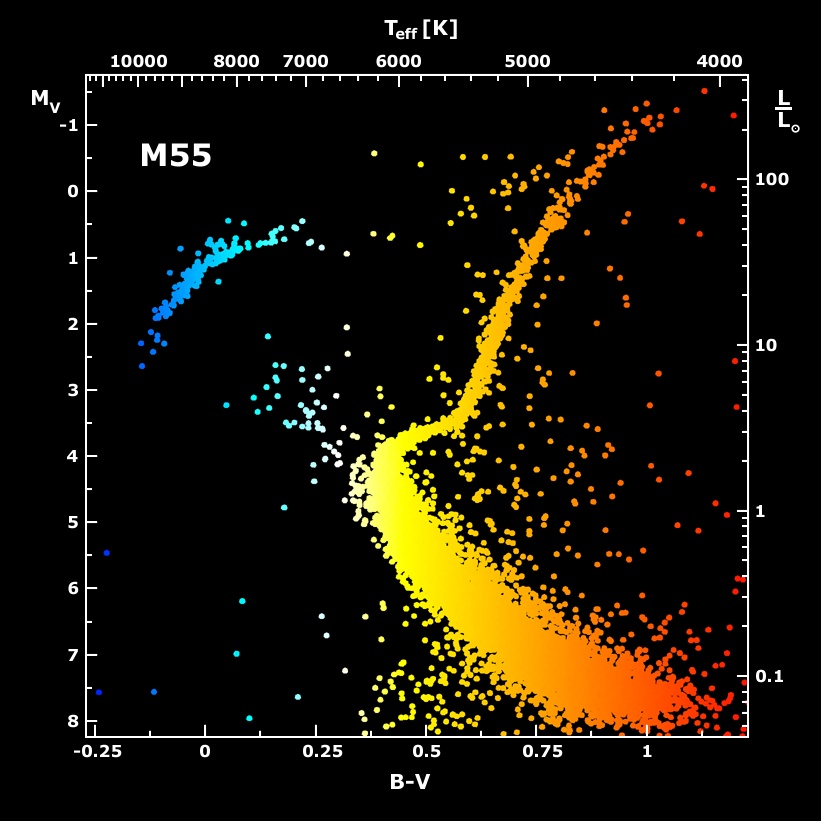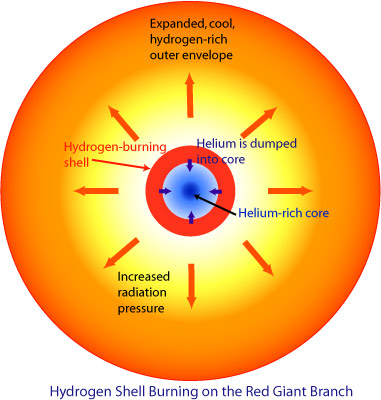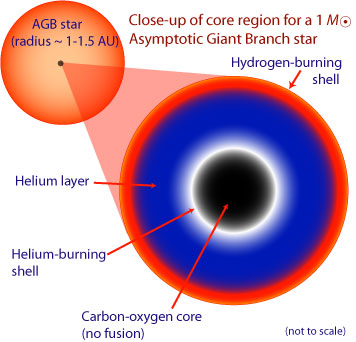Can't help comparing Palomar 6 with M15, because there are a few interesting differences, but also one fascinating similarity!
Wikipedia wrote about Palomar 6:
Palomar 6 is a loose globular cluster in the constellation Ophiuchus
that belongs to the halo of the Milky Way galaxy.
That's not what today's caption said.
APOD Robot wrote:
After much study including images from Hubble, a leading origin hypothesis is that Palomar 6 was created -- and survives today -- in the central bulge of stars that surround the Milky Way's center, not in the distant galactic halo where most other globular clusters are now found.
Wikipedia wrote about M15:
Messier 15 is one of the most densely packed globulars known in the Milky Way galaxy. Its core has undergone a contraction known as "core collapse" and it has a central density cusp with an enormous number of stars surrounding what may be a central black hole.
But guess what? According to Wikipedia M15 is home to 100,000 stars, whereas, according to today's caption, there are 500,000 stars in Palomar 6! So there would be five times as many stars in Palomar 6 as there are in M15! Is that possible?
The core of M15 is brilliantly bright. That is certainly not the case at all in Palomar 6, but there is, nevertheless, a "whitening" in the center of this globular.
However, there is a fascinating similarity between Palomar 6 and M15:
Wikipedia wrote about Palomar 6:
First discovered on the National Geographic Society – Palomar Observatory Sky Survey plates by Robert G. Harrington and Fritz Zwicky,[3] it was catalogued as a globular cluster, and
is one of four globulars known to contain a planetary nebula.
Wikipedia wrote about M15:
It also contains Pease 1, the first planetary nebula discovered within a globular cluster in 1928. Just three others have been found in globular clusters since then.
But we need to look at the colors of the stars in Palomar 6, and find out what the colors and the luminosities of the stars mean. Take a look at the diagram below:
Let's start by looking at the B.J. Mochejska, J. Kaluzny (CAMK), 1m Swope Telescope picture at left, where the colors are well chosen (although saturated). To understand the diagram, you also need to understand that the stars are brighter the higher up they are in the diagram, and fainter they lower down they are.
As you can see, most of the stars in a globular cluster are the really faint red ones, the ones that are located in the lower right corner of the diagram. But they are so faint that they are only resolved in very highly resolved images of globular clusters, and I don't think we can see them in today's APOD.
The brightest stars in a globular cluster are also very red. That is because the reddest of the brightest stars are the most distended, swollen red giants in a globular cluster, and they are teetering on the brink of change.
Take a look at Lithopsian's diagram at right. Can you see that there are
two branches of stars reaching for the top right corner? The lower of these branches is the red giant branch. Here we find stars that have exhausted the hydrogen in their cores, and now they have inert cores that shrink under their own gravity. As the cores shrink, the temperatures of the cores rise, hydrogen fusion is taking place in a shell around the core, and the outer layers get more and more puffed up. The star gets ever larger, redder and brighter.
But then the star undergoes a "helium flash", when the core gets hot enough to start fusing helium into carbon and oxygen. As this happens, the stars shrinks prodigiously. At the same time, the outer layers of the now-compact star heats up by thousands of degrees, and the star changes in color from red to blue. The star is still bright, but it is fainter than it was when it was a huge red giant, because it is so much smaller.
Note: Red giant stars turn blue after the helium flash only among very metal-poor stars, like in globular clusters.
Take a look at the color-magnitude diagram of globular cluster M55 again. You can see where the blue stars are, in the upper left part of the diagram. This part of the diagram is called the horizontal branch.
(On the horizontal branch, to the right of the blue stars, is where you find the pulsating
RR Lyrae stars, which are crucial for determining the distance to globular clusters. A globular that has few or no RR Lyrae stars, because it has an underdeveloped horizontal branch, is harder to determine the distance to.)
Anyway. The blue stars on the horizontal branch fuse helium to carbon and oxygen in their cores. But when they have exhausted the helium in their cores, the core again becomes inert. Once again the core shrinks and heats up. The stars swells up and becomes red again, now rising on the asymtotic giant branch. Can you see it in Lithopsian's diagram at right, where it is colored blue? (Horror!)
But for a star on the asymtotic giant branch there are two shells surrounding the "dead" core, an inner helium shell fusing helium to carbon and oxygen, and an outer hydrogen shell fusing hydrogen to helium.
The two shells turn on and off alternatively, and the star becomes ever more unstable. Also the shrinking core grows ever and ever hotter. Eventually the star begins blowing a stronger and stronger wind and the star begins shrugging off its tenuous outer layers. Eventually the star turns into a planetary nebula and a white dwarf.
Remember? There is a planetary nebula in Palomar 6. And
one in M15, too.
Ann
 Palomar 6: Globular Star Cluster
Palomar 6: Globular Star Cluster





